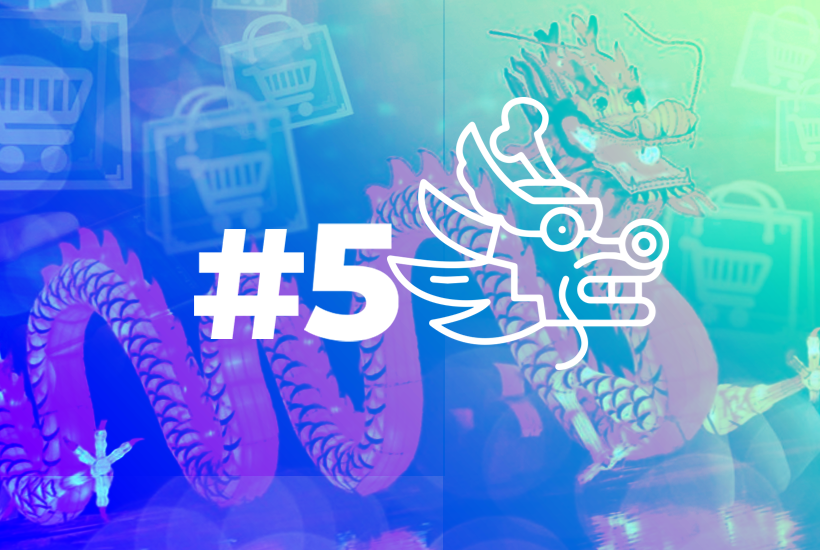5 ecommerce trends in China in 2023
Blog
By 2022, approximately 1 billion consumers shopped through e-commerce channels in China, generating 45.3% of all online retail sales. As one of the world’s largest e-commerce markets in terms of sales, brands should look to China to stay on top of key trends, innovations and consumer behaviours.
The rise of virtual influencers

In the last year, Artificial Intelligence has spread through social networks and so-called “AI influencers” have been born.
Brands use these virtual influencers in live product streaming sessions on Chinese platforms. These digital influencers perform the same functions as influencers: engaging consumers, especially Generation Z, with different profiles and characteristics designed to attract different target audiences.
AI idols will become more common in the coming year, and a fifth of B2C brands in China are expected to use these influencers to improve consumer shopping experiences by 2023. Alibaba has already launched two virtual influencers as brand ambassador sin its marketplace.
The metaverse and Chinese marketing
Metaverse experiences have also proven to be a relevant marketing tool for brands to engage directly with consumers and gain followers both in the metaverse andin reality. In China, metaverse marketing is used to create immersive experiences for customers, in which consumers communicate and interact with brands without leaving home.
Since the end of 2021, nearly two dozen luxury brands have launched digital collections on Alibaba and thousands of consumers have purchased them, and it is predictable that more and more retailers will start leveraging metaverse marketing to win customer loyalty and develop products this year: by 2026, a quarter of consumers are expected to spend at least an hour a day on the metaverse for work, shopping, education or entertainment.
Generation Z in China

With only 15% of China’s population, Gen Z already has a significant influence on Chinese consumer trends as one of the fastest growing consumer groups in China. Gen Z accounted for two-thirds of consumers in Alibaba’s cross-border marketplace, Tmall Global, in 2022, and more than 17% in the Tmall Luxury Pavilion.
Gen Z’s values differ from other consumers as they prioritize individuality and demand categories before niche as their purchasing power increases. Therefore, brands should look at how to attract this group of consumers.
Cross-border and e-commerce
The e-commerce sector in China has experienced significant growth in recent years. Consumers in China are increasingly interested in international products and brands, fuelling the industry’s growth.
As a result, to meet this demand, many companies have entered the Chinese market, creating competition between platforms such as Alibaba, NetEase Kaola, JD Worldwide Vipshop Global, Amazon Global, and Pinduoduo. This makes the Chinese market more attractive and diverse and attracts millions of Chinese buyers to international markets and companies.
Growing importance of lower-level cities

Selling through social media to Chinese cities and lower-level Chinese regions is becoming more common. Lower-tier cities such as Zhenjiang or Yangzhou have increased in terms of purchasing power, and are also willing to spend and buy consumer goods as their cost of living is lower than that of first-class cities. Beijing or Shanghai.
These cities that previously went unnoticed have become much more interesting and coveted markets for international brands, as they lack strong competition and offer opportunities for growth.
Revenue in the e-commerce market in China is expected to reach US$1.487 billion by 2023. Revenue is expected to show a CAGR of 12.42%, resulting in a projected market volume of US$2.375 billion by 2027.
Therefore, international brands must continuously monitor the Asian giant to anticipate opportunities, anticipate trends and take advantage of the full potential of the Chinese online market.
At Nifty Export, we are digital marketing experts in China. If you need to achieve the strategic objectives of your company in the Asian giant, you can contact us, we have a large sol

